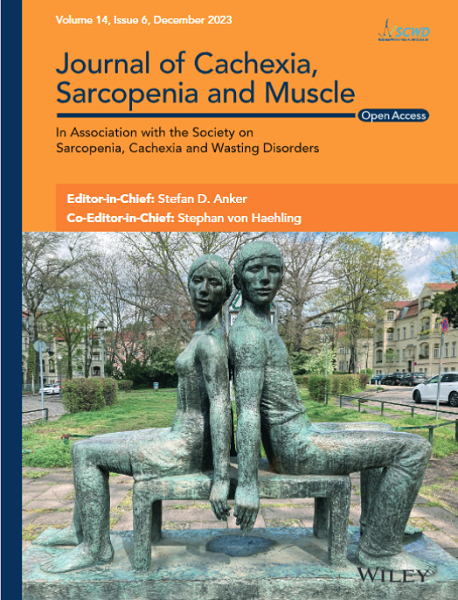Impact of Long-Term Fasting on Skeletal Muscle: Structure, Energy Metabolism and Function Using 31P/1H MRS and MRI
Abstract
Background
Fasting shows promise for public health, but concerns about muscle loss hinder its acceptance, particularly among the elderly. We explored the impact of long-term fasting (12 days, 250 kcal/day) on muscle structure, metabolism and performance.
Methods
We prospectively assessed muscle volume, composition, relaxometry data and lipid metabolism in 32 subjects (16 men; 50% over 50 years old) before fasting, at the end of fasting and 1 month post-fasting. Techniques included high-resolution 3D Dixon MR imaging, multiecho CSE and single-voxel MR spectroscopy. Dynamic 31P-MRS, quantitative MRI, maximal voluntary contraction (MVC) measurements and exercise testing (VO2peak) were repeated throughout the protocol.
Results
Although the average body weight loss was 5.9 kg (7.4%, p < 0.001), the skeletal muscle volume change measured on the right calf muscle was 271 mL (5.4%, p < 0.001). This closely aligns with expected losses of glycogen (1%–2%) and bound water (3%–4%), estimated to total 404–505 mL. MVC (anaerobic lactic metabolism) remained preserved in both thighs and calf muscles, regardless of sex or age. Unchanged T2 showed that fasting did not induce structural or inflammatory changes. MRI/MRS revealed fat redistribution among tissues, with subcutaneous fat decrease (by 417.2 cm3, p < 0.01) and total fat fraction increase (by 0.2%, p < 0.05) in muscle. The intramyocellular lipid pool increased by 2.2 times (p < 0.05), whereas the extracellular lipid pool decreased to 1.4 times (p < 0.05), revealing rapid lipid trafficking and adaptation. During fasting, the T2* value increased by 1.2 ms (p < 0.001), likely because of changes in the configuration of intracellular lipid droplets, with an increased proportion of lipid droplets of smaller size, optimizing accessibility of lipid fuels and mitochondrial FA. Exercise testing (VO2peak) showed no change in maximal oxygen uptake, but fat oxidation improved with a 10% decrease in the exercise respiratory exchange ratio (p < 0.001). Mitochondrial oxidative capacity and PCr resynthesis rates in muscle were maintained. Females improved their mitochondrial function by D + 12, with τPCr decreasing to 29.61 s (p < 0.01), surpassing males and demonstrating better fat oxidation capabilities.
Conclusions
Long-term fasting did not alter muscle metabolism or performance, nor induced structural or inflammatory changes. The decrease in muscle volume is minor when accounting for glycogen and water depletion during fasting. Fat is relocated to the intracellular compartment of myocytes. Both anaerobic and aerobic metabolic pathways remain unchanged after 12 days of fasting in both sexes and older subjects. This suggests that human muscles, like those in animals, have evolved to withstand seasonal food shortages and endure long fasting periods.


 求助内容:
求助内容: 应助结果提醒方式:
应助结果提醒方式:


